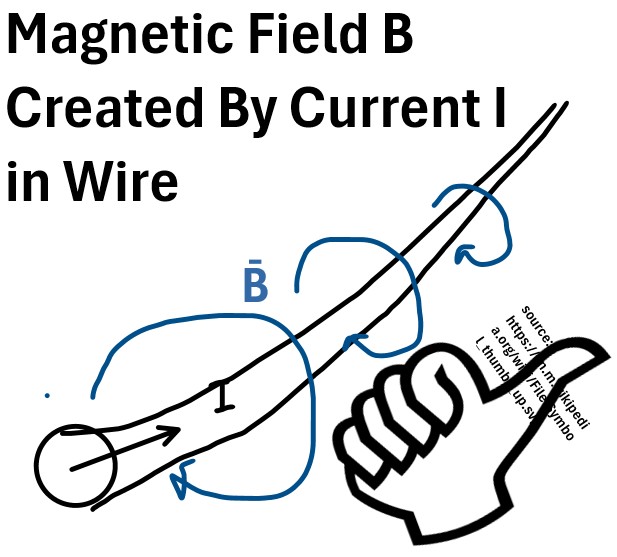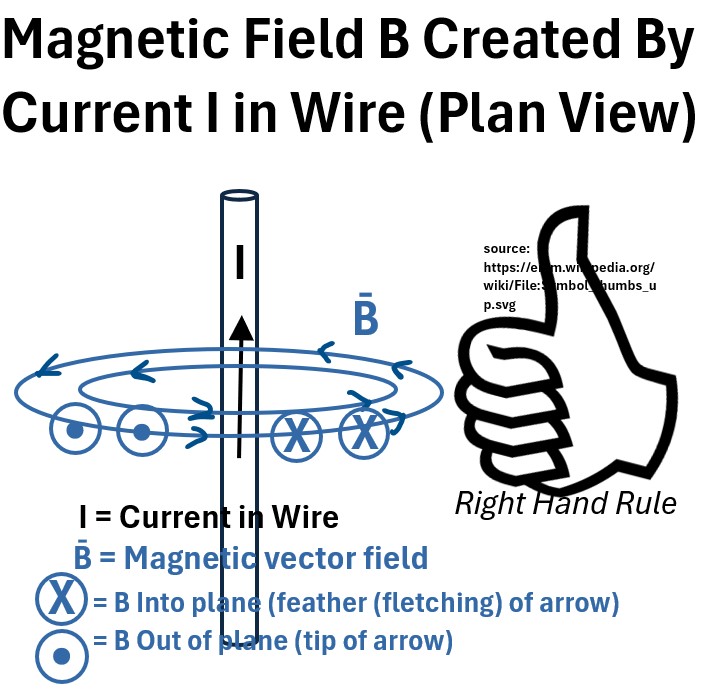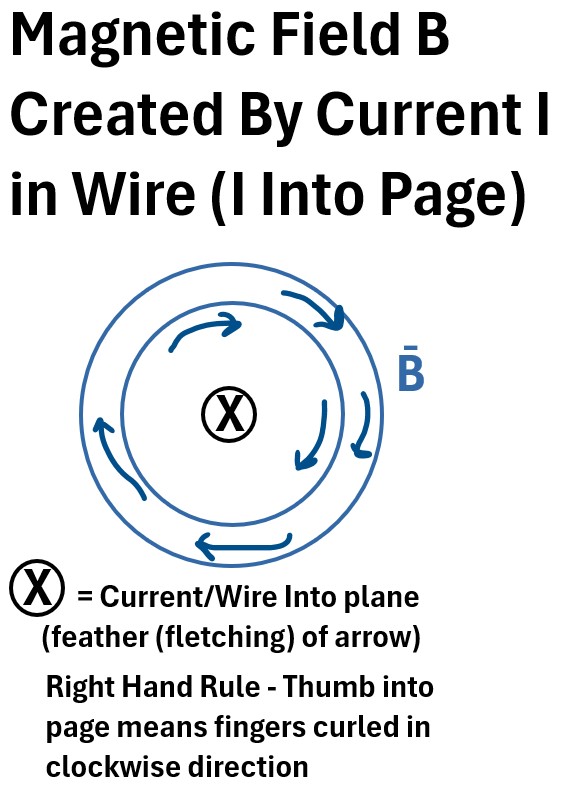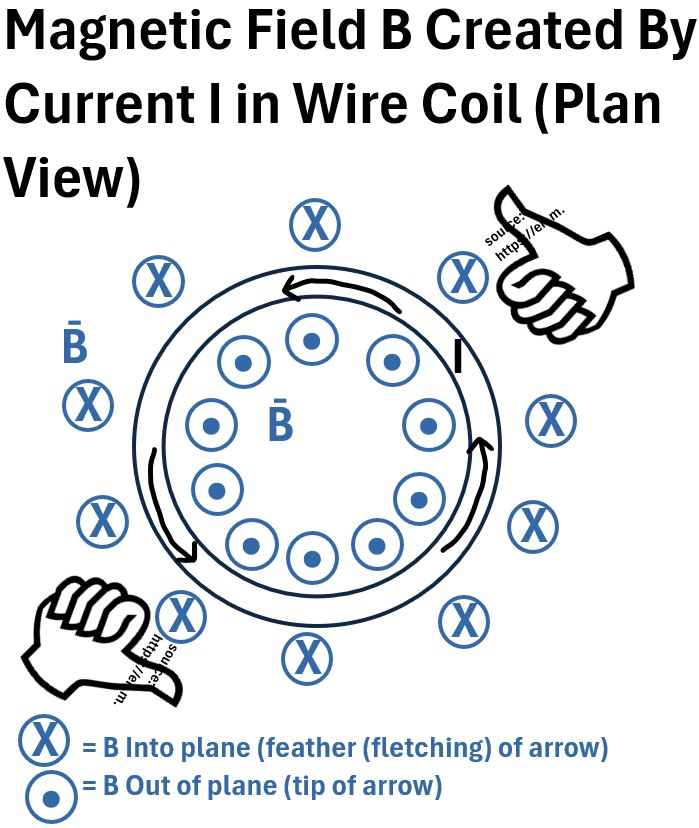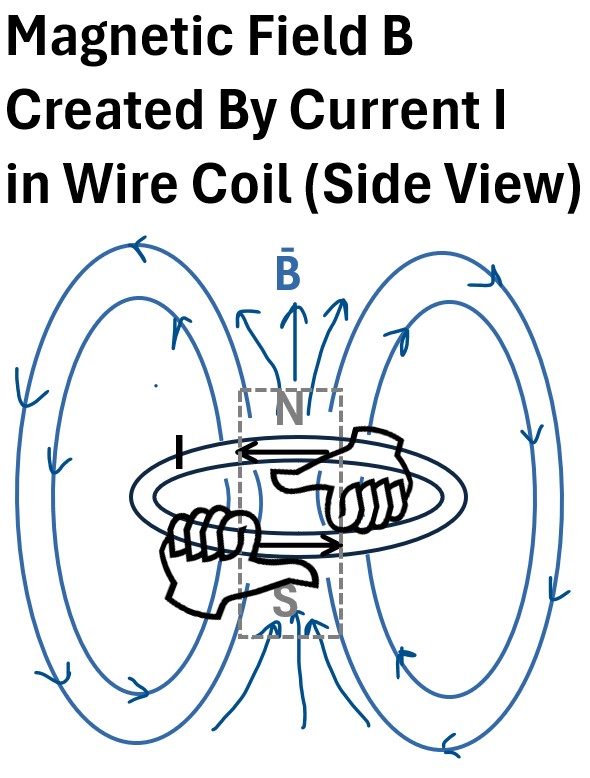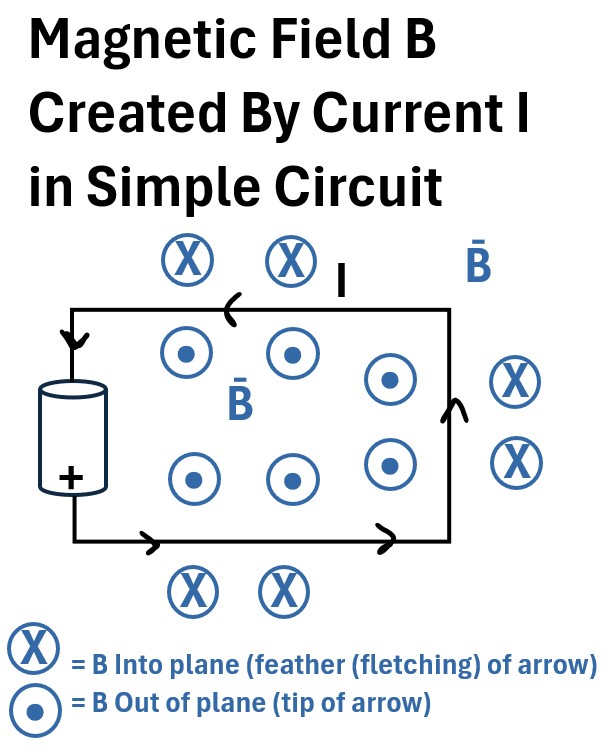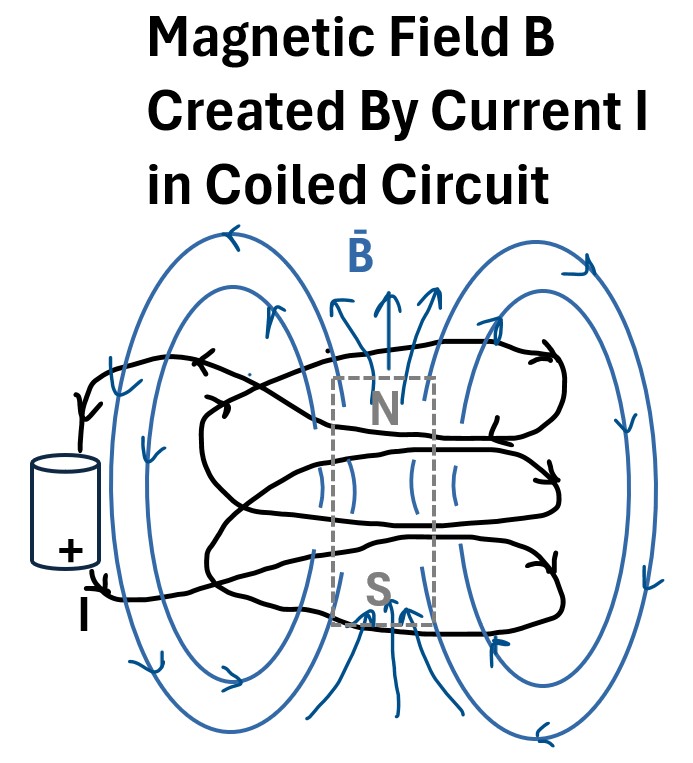Menu (linked Index)
Current and Magnetic Field Right Hand Rule Examples
Last Update: September 17,2025
Introduction
An electric current produces a magnetic field around it.
Picture: Current Flowing in a Wire Produces a Magnetic Field
This was discovered by H.C. Oersted in 1820.
He basically noticed the movement in a magnetic compass placed nearby a wire with current.
You can read more about this in these references.
- Faraday, Maxwell, and the Electromagnetic Field – Forbes and Mahon; 2019 Prometheus Books
- Magnetic field due to current – Khanacademy – Mahesh Shenoy
- Orsted’s Experiment – Kathy Loves Physics
In this post we’ll describe the Right Hand Rule which allows us to compute the directions of the current or magnetic field.
Several examples will solidify the concept.
Right Hand (Thumb, Grip, Curl) Rule With Examples
Use the Right Hand Thumb (Grip or Curl) rule to determine the direction of the magnetic field created by a current.
Picture: The Right Hand Thumb (Grip, Curl) Rule
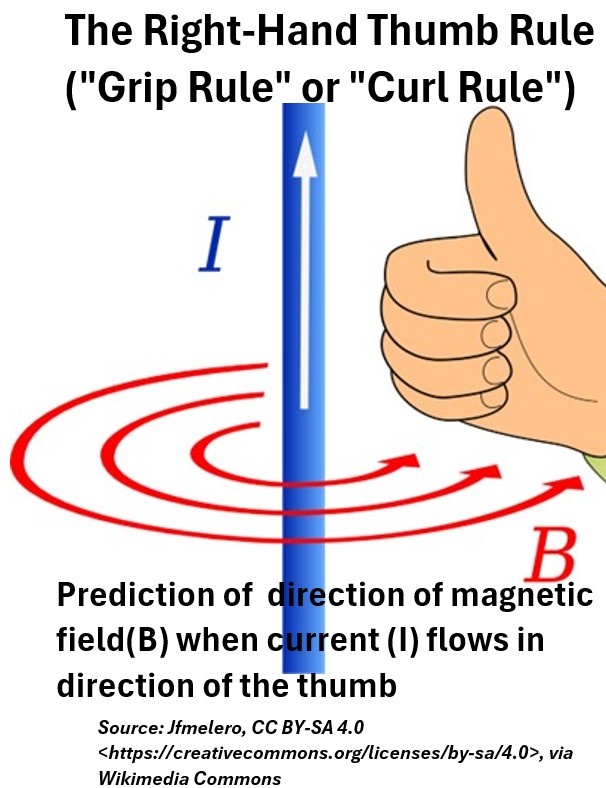
With your right hand in a clenched thumbs up position,
- point your thumb in the direction of current flow I.
- Your clenched fingers indicated the direction/path of the magnetic field B.
- Right hand thumb rule – KhanAcademy
The next several drawings depict the shape and direction of the magnetic field for a magnet and several configurations/views of a current carrying conductor (wire or coil).
They are based on this great video tutorial: Magnetic Fields around Wires, Coils, and Poles of Bar Magnets – Dr. Pierce’s Physics & Math
Shape of a Magnet’s Field
We will eventually see that we can generate magnetic fields (from currents) that are similar in shape to the fields generated by magnets (if we configure the conducting coil correctly).
So let’s remember what a magnet’s field look like.
The first picture below is a permanent magnet with its magnetic fields.
- The magnetic field lines form continuous, closed loops.
- Outside the magnet, these lines emerge from the North pole and curve around to enter the South pole.
- Inside the magnet, the lines continue from the South pole back to the North pole, completing the loop.
- Magnets come in dipoles (you cant have monopoles)
- All magnetic fields have a north and south dipole characteristic
Picture: Magnet Magnetic Field
Straight Vertical Conducting Wire
Now consider a straight vertical section of conducting wire with current flowing through it.
Picture: Magnetic Field Created by Current in a Wire
Since the current flows in a straight line, the field lines form concentric circles around it.
The picture below shows the same wire going into the page and depicted by the X with a circle around it. (think of the back end feather of an arrow).
The magnetic field lines move concentrically around it in the direction demonstrated by the right hand rule.
Picture: Magnetic Field Created by Current in a Wire (Into Page)
Coil of Wire with Current
Now consider the picture below where a coil of wire has current flowing in it.
Picture: Magnetic Field Created by Current in a Wire Coil (Plan View)
From this plan view (looking down on the circular conductor), the magnetic field lines
- go into (depicted by X) the page on the outside of the wire and
- come out of the page on the inside of the coil (depicted by a dot)
Taking a look at the same coil from a side view we get the picture below.
Picture: Magnetic Field Created by Current in a Wire Coil (Side View)
In a circular coil, the shape of the magnetic field have a more oval shape.
Simple Electric Circuit
Consider the simple circuit below.
Picture: Magnetic Field Created by Current in a Simple Circuit
Current flows (conventionally) from the positive terminal of the battery to the negative terminal.
With current flowing in this direction, the magnet field lines come into and out of the page as shown.
Multiple Coiled Circuit
Finally, if we conduct current through a coiled wire as shown below we get those oval shaped field lines again.
Picture: Magnetic Field Created by Coiled Wire Circuit
While magnetic field lines always form closed loops, their precise geometric shape is influenced by the source of the magnetic field.
A simple, perfectly straight wire produces perfectly circular field lines,
but, more complex geometries like multiple coils lead to more oval or elliptical patterns for the field lines outside the source.
Disclaimer: The content of this article is intended for general informational and recreational purposes only and is not a substitute for professional “advice”. We are not responsible for your decisions and actions. Refer to our Disclaimer Page.
